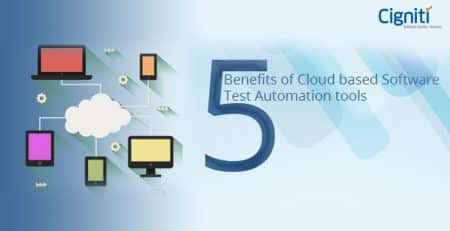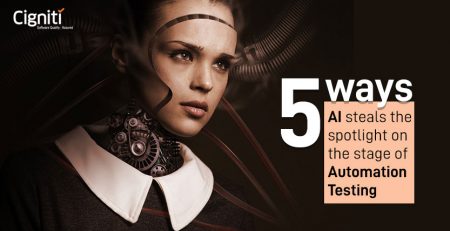Harnessing AI for Seamless Software Testing: The Self-Healing Revolution
|
Listen on the go!
|
What drives organizations to make the tough choices between speeding up releases, cutting costs, boosting product quality, and sparing time for innovation?
One of the critical reasons is the time consumed in maintaining failed test cases and the inability to leverage AI in testing. Test automation is proving ineffective and outdated due to the high cost and time needed for maintenance.
Research indicates that while setup accounts for only 20% of the software test automation cost, maintenance consumes 80%. With the rapid pace of agile development and constant UI changes, many test scripts fail, forcing testers to spend time updating and fixing them. This creates significant roadblocks that slow down test automation efforts.
The constant need for test maintenance demands more time, money, and resources and decreases return on investment (ROI). The inefficiency in maintaining these test scripts detracts from the benefits of test automation.
However, by integrating Artificial Intelligence into test automation, businesses can significantly reduce the burden of script maintenance. AI-driven self-healing mechanisms in AI testing automatically adapt to changes, minimizing manual intervention and enhancing testing efficiency. This innovation is key to faster, more cost-effective, and higher-quality software releases.
The AI-Based Self-Healing Solution
This is where self-healing test automation comes in. Self-healing test automation dramatically reduces continuous maintenance by automatically detecting and adapting to object changes, ensuring seamless operation without manual intervention.
|
Understanding AI-Based Self-Healing Test Automation
Traditional test automation tools rely on predefined application models that outline components, objects, and their attributes. These static definitions serve as the basis for identifying and interacting with various components within the application. Every time the application is updated, the components and their parameters change. However, conventional test scripts aren’t built to accommodate these changes and only function with static definitions. Any modification to components will break the scripts, leading to what is known as the fragility of test scripts.
When a fragile script breaks, an automation engineer must step in, identify the issue, and fix the script. The engineer must inspect the object to find new property values, update the script or object repository, and rerun the test. This entire process of manual object identification, maintenance, and troubleshooting can take up to 15 minutes per occurrence. While 15 minutes may not seem like a lot, the time adds significantly when considering project size, application maturity, and development stage.
On average, one application deployment per week can encounter about 35 object changes, resulting in nearly nine hours of script maintenance.
Self-healing test automation harnesses artificial intelligence (AI), machine learning (ML), and natural language processing (NLP) to automatically adjust scripts in response to modifications within the application’s user interface (UI).
How Does Self-Healing AI-Based Test Automation Work?
The primary reason scripts break is changes in the objects—items in the application’s UI, such as buttons and text boxes. Each object has specific properties that help the scripts identify and interact with it. When these properties change, a static script fails to identify the object, causing the test to break.
AI-powered self-healing mechanisms can detect objects even after their properties have changed, effectively negating the need to alter the script. Here’s how it works:
- Object Detection: The AI scans for objects and detects changes to object parameters.
- Automatic Adaptation: Instead of failing, the AI automatically edits the internal script to align with the new object properties.
- Instant Updates: The self-healing feature scrapes, evaluates, chooses, and edits the script as needed within a fraction of a second.
- User Action Sensing: The system senses user actions and captures them for later review by the tester.
This process drastically reduces testing downtime, improves ROI, and adds another layer of automation, further minimizing the need for manual intervention. Self-healing test automation fits seamlessly into agile and DevOps methodologies, enhancing efficiency and productivity.
Assurance and Quality Delivered at Speed for a Global Insurance Provider
Leveraging self-healing AI-based test automation, a leading insurance provider achieved rapid testing and tripled their annual release frequency, ensuring faster, high-quality software delivery.
- 10 minutes Average build time: Non-developers can consistently automate tests quickly, making it easy to keep pace with agile delivery cycles and growing regression requirements.
- 8x Faster testing: Testing faster and earlier has led to rapid de-risking of the application, with fewer errors entering production and an opportunity to scale automation to cover other platforms.
- 2 minutes Average From multiple hours of manual test execution to 2 minutes automatically per case, delivering significant productivity gains across the QA team.
- 3x More Releases Per Year: From 4 to 12 releases of a business-critical partner portal.
How Cigniti and Leapwork can help you stand out
Cigniti is a Gold partner of Leapwork, a robust and intuitive no-code test automation platform. Cigniti has an aligned strategic partnership to co-create robust, intuitive, automated testing solutions across domains and technologies. Our certified testing experts are trained in the Leapwork suite and have significant expertise in providing services around the Leapwork platform.
Leapwork enables automated test cases to be designed and built using the universally understood language of flowcharts rather than scripts. This means users don’t require programming skills to implement or maintain cases, reducing developer dependency and helping achieve rapid automation coverage.
Conclusion
The software development landscape is constantly evolving, demanding more efficient, reliable, and scalable testing processes than ever before. Automated testing with self-healing capabilities emerges as a pivotal advancement in overcoming the limitations of traditional automation methods.
By autonomously adjusting to software changes, self-healing capabilities in automated testing diminish maintenance efforts, enhance test coverage, improve accuracy, and expedite the feedback loop. These AI and ML-powered systems continuously learn and refine themselves, ensuring high-quality software and a robust testing process. Understanding when to implement self-healing test automation is crucial for maximizing its benefits.
Ready to revolutionize your software testing approach? Read our detailed joint white paper on AI-driven automated testing to embrace self-healing test automation and unlock the full potential of your QA processes.





Leave a Reply